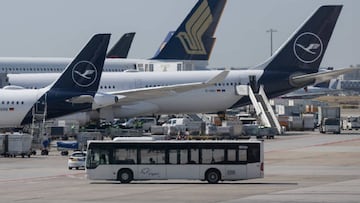Why is there no row 13 on some airline flights?
Most airlines have opted to withdraw this number from their fleets due to triscaidekaphobia, a phobia stemming from the number 13.

Every day millions of people take flights around the world, whether for leisure or work. Although the industry took a battering during the covid-19 pandemic, it has been experiencing a boom now that restrictions have been largely lifted across the globe, to the extent that Heathrow asked airlines not to take more bookings this summer due to overload.
Flying is a fast and safe means of transport used by billons of travellers in all parts of the world. However, there will always be myths and legends surrounding flight, some that are true and others that are flights of fancy. One such curiousity concerns the 13th row of an aircraft.
In many cultures, the number 13 is associated with bad luck, which is why many airlines prefer to avoid igniting the superstitions of their customers and have opted to remove the number from there seating plans. Irrational fear of the number 13 is known as triscaidekaphobia. One of the few airlines that elected not to remove the 13th row from their fleet is US carrier Alaska Airlines, while Lufthansa also eschews the number 17 in a nod to their Italian passengers, who also associate that number with bad luck, according to SkyScanner.

Bottoms up
Among other curiosities surrounding flying, it is a common belief that at altitude and with a lack of oxygen on board, drinking alcoholic beverages can affect us more quickly. However, various studies have shown that there is in fact not much difference between drinking on the runway or at a height of thousands of meters.
Related stories
Neither is it true that airlines avoid flying through an area that has provided some of the greatest historical mysteries in aviation: the Bermuda Triangle. Not least because the only viable alternative for some routes is to make a detour of about 3,000 kilometers. As for crew members, they must measure a minimum of 1.57m to be able to reach the upper compartments of the aircraft, which are at a height of 1.80 metres.
Aircraft are put through all kinds of resistance and safety tests, and one of these concerns exposure to lightning in the middle of a storm: almost most aircraft receive at least one hit during a calendar year. However, the last accident caused by a lightning strike took place in 1967, testament to the security and safety of modern aircraft.